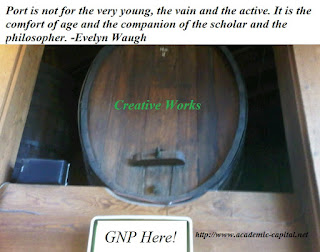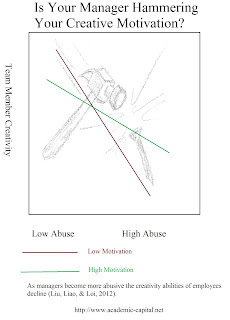Economic growth
requires the creation of new products and services for sale that develops new
financial revenue streams. Creative works contribute to economic growth by
allowing for solutions to market problems and effective consumer utility. On a
national scale research and development can increase the gross national product
of entire nations.
The first step in
understanding economic development is the production of creative works.
Creative works can be defined as a systematic approach to increase the stock of
knowledge that contributes to man, culture and society by developing new
applications (OECD, 1993). Such creative works are then further developed to
make consumer products.
The human capacity to
innovate has an impact on productivity growth (Porter and Stern, 2000). This
productivity growth is based on the intellectual capital within R& D
projects and available national knowledge stock. As investments are moved into
R&D, it is the human capacity that develops creative works from available
information to solve market problems.
Research by Guloglu and Tekin (2012) studied the relationships among R&D, innovation
and economic growth in the countries of Australia, Canada, Finland, France, Germany,
Italy, Japan, Korea, Netherlands, Portugal, Spain, United Kingdom and the
United States. R&D expenditures,
patents and Gross National Product were considered important factors in the
research in order to determine how each influences the other. A Granger-Causality Testing
Methodology was used to analyze the results.
Results:
-There are positive relationships
between R&D and innovation, R&D and economic growth, and economic
growth with innovation.
-R&D cause
technological change and this technological change causes economic growth.
-Causality relations
between R& D and technology may also work in reverse.
-Support for the
Schumpeterian view that R&D sectors generate innovation and enhance rates
of growth in the economy.
-Support that inventive
activity and innovation are pro-cyclical.
Analysis:
The development of national wealth is a result of
the capacity to use human capital to engage in R&D projects that can be
used to develop creative works and enhance GNP. Organizations contribute
uniquely to the development of their nation by developing products and services
that create higher levels of revenue that make their way into the economy.
Through synergistic R&D developments and knowledge sharing national
positions on the global market can be enhanced.
Author: Dr. Murad Abel
Author: Dr. Murad Abel
Guloglu, B. and Tekin, R. (2012). A
panel causality analysis of the relationship among research and development,
innovation and economic growth in high-income OECD countries. Eurasian Economic
Review, 2 (1).
OECD (1993). The measurement of scientific and technological activities: Proposed
standard practice for surveys of research and experimental development (Frascati
Manual).Paris:OECD
Porter, M. and Stern, S. (2000).
Measuring the ‘ideas’ production function: Evidence from international patent
output. NBER Working Paper, 7891.

